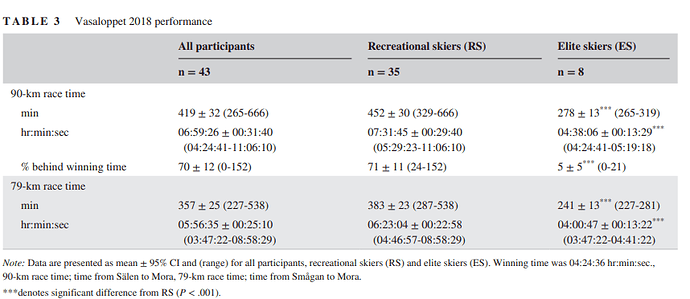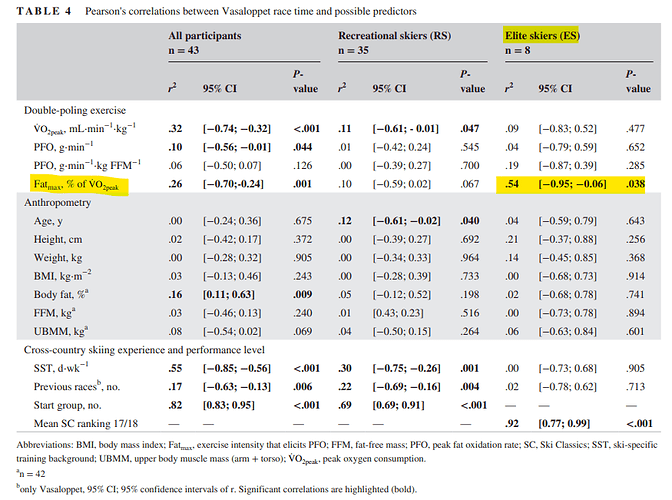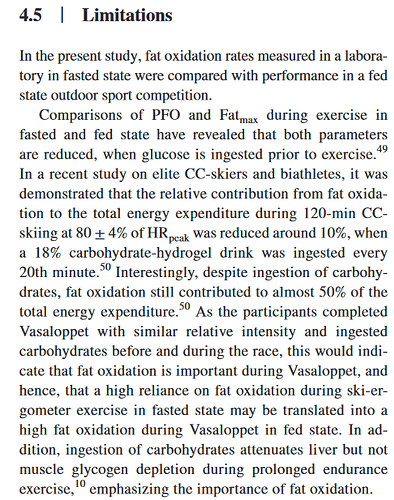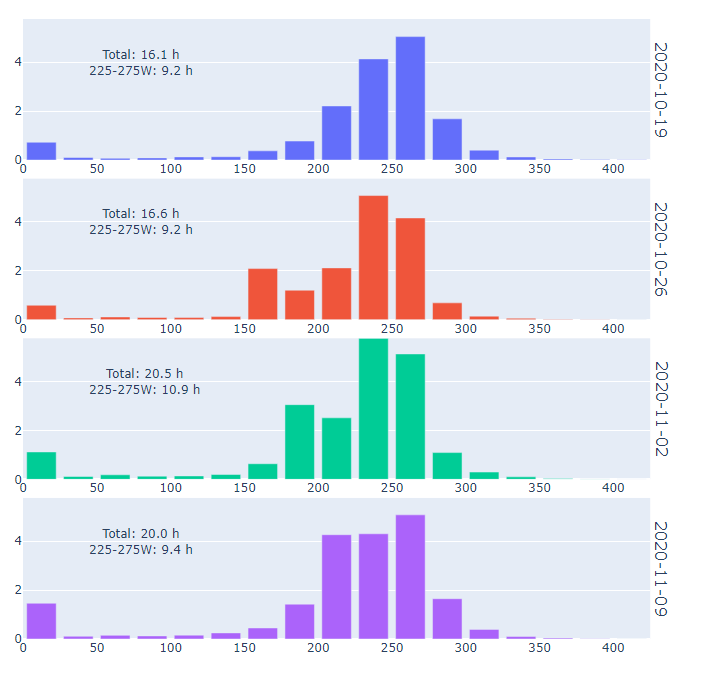What I find a bit confusing is that the determination of LT1 appears in many cases to be very subjective. Take the middle graph for instance. Why would LT1 not be determined at the early point?
Just one of the many reasons not to consider lactate testing any sort of gold standard. The results are often variable and open to question. Numerous attempts have been made to make their interpretation less subjective, but none work well enough to have really caught on. So, LT remains whatever the person looking at the graph says it is.
This is the group mean. Difficult say if it isn’t skewed by some curves.
Are you sure? It doesn’t quite match the heavy black line in the first figure.
I confess, I haven’t read the paper yet, but if I had to guess, it would be that it is supposed to be a representative subject?
Would 10 minute steps give a more defined point do you think?
What do you think therefore would be a more accurate way of pinpointing LT1. Or is it such a variable point that you might as well go by feel on any particular day.
I think if you removed the top 3 curves in figure A the break point would be more “defined” in B. However, I find this sort of irrelevant. I’m just surprised by the variability in A. For me this stresses the point that these curves are highly individual. And that any fixed concentrations to define zones (like 2 or 4 mmol) or to define other thresholds like 1 mmol above something should be taken with caution.
You’re looking for an inflection point on what is actually a continuous curve, and a grossly undersampled one at that. Thus, no method is going to be infallible. I would therefore opt for something that is easy, but objective, not subjective.
For example, early studies used a 0.5 mmole per liter increase above resting to identify LT.
I put it in here, this is vaguely related. I always like these studies where they relate parameters to actual race performance. Especially when race durations are similar to what I like to do.
https://onlinelibrary.wiley.com/doi/abs/10.1111/sms.13769
The races
They also measured Fat ox
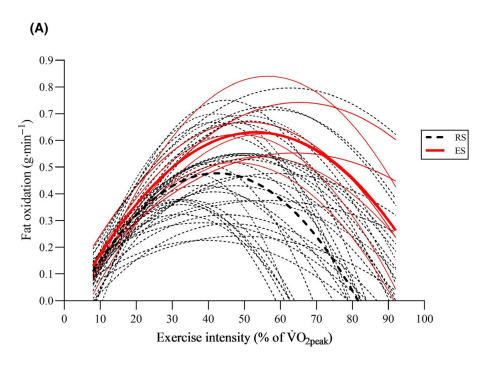
ES = elites
RS = recreational athletes.
yes, move that thing to the right.
and fractional utilisation of vo2max at fatmax appears the strongest factor for elites. For recreationals not really. It would be interesting to see a more detailed analysis of recreationals. What about the top third or so. I would assume this is a very diverse group. Training days per week a very strong predictor of race time highlights this.
I wonder about the start group. Having faster folks around you pushing? Or just an indicator of the experience level? Could be interesting for a pacing strategy in these events.
No surprises here. fatmax is just lactate threshold by another name.
Furthermore on this study. This is a point I often wonder about when looking at lab substrate utilisation:
What they don’t mention directly is the effect of duration. The first 120min are driven by glycogen and intramuscular fats. Contributions change at later time points. Lab substrate utilisation measurements are rarely conducted in a fatigued state.
today was my last day of the first ISM-Dottore “Orange juice” 4 week base block. Love it:
Had my last race and a week off before that. Afterwards no rest week. I follow the “if you need a rest week you’re training too hard” approach. Plenty of evil tempo riding in there. Can absorb it so far. Have to see how weather turns out in the next weeks: progression via more evil higher tempo or via duration at LT1. In terms of fatigue it really makes a difference if you go low or high tempo. Never really did much low tempo.
what really works out are Dottore’s recommendations for low cadence work. I’ve always had knee problems in the past.
Really hope weather stays as mild for the next few weeks. Crusing around at this intensity level is super fun.
Have you got a link to that as I’ve developed a serious left knee issue after doing low cadence Tempo intervals?
I’ve been doing this since the beginning of this block. Not as structured since I often took advantage of the terrain where I ride. However, still get quite some low cadence work.
I’ve always struggled with this low cadence stuff, my left knee! Each winter the same story. It never occurred to me to break it up into short intervals. And to progress with them.
Hmm, I wouldn’t do them in your situation. It seems you can get a similar benefit from doing heavy leg lifts like quarter or seated squats. I’ve had some knee issues in the past, and it was muscle imbalances that I corrected via resistance training.
If you don’t have knee issues, this is a good post on the topic including a progression:
I must have missed this in my thread skimming (if you talked about it here). This base block called “Orange Juice” here. It’s a base phase where your endurance rides are at 1.3-1.8mmol/La (which for you is low tempo on its standard definition)? Is that right?
With Dottore “Orange juice” I refer to the M Ferrari thread. My base period so far is a mix of ideas from both threads.
1.8 mmol would be already a little bit high for me but as you pointed out, my first breakpoint/turn point/deviation from baseline is in “standard”-tempo territory. However, I dare to right “around” this point, not just below. Based on how I feel.
Thanks I’m off the bike at the moment until I see a specialist. I had an keyhole surgery 8 years ago to remove some cartilage and generally smooth things of in that area. The consultant said it looked like a dog had been nawing at it. The symptoms this time round seem to be broadly the same. So I’m just thinking forward to when I can get it sorted.
fyi
Even though many aspects have already been adressed before, a very good overview of his coaching philosophy.
And for all non-La testers a really helpful hint: his zone 2 is at the point where talking gets difficult. This is a very different point to you can talk easily. For me this coincides where La starts going up above baseline.
And his 80/20. I’d say his 80/20 is very different to the Norwegian 80/20. This Russian scientist’s article in the pro/elite thread was really a final eye opener for me. Their LIT is very different to what ISM suggests. Their focus is really on the intensitiy sessions while ISM puts more emphasis on the extensive side.
